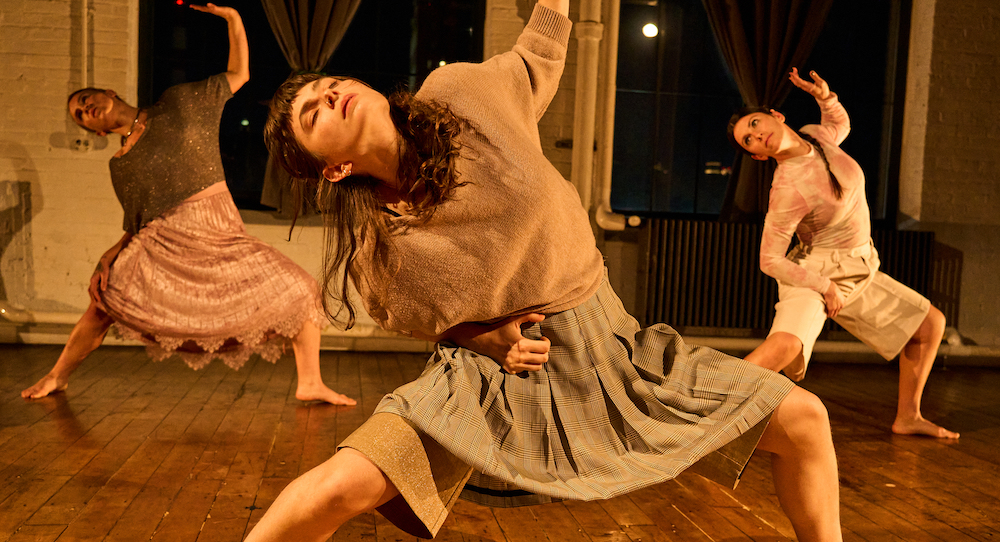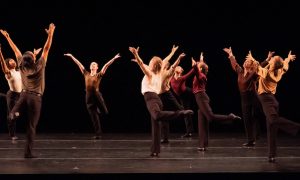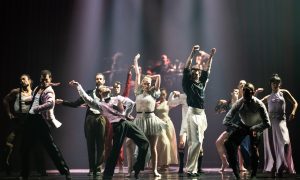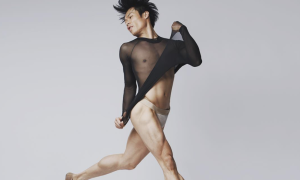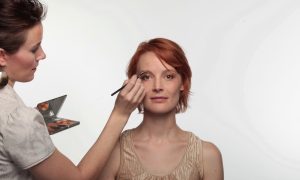Greenspace, Queens, NY.
October 18, 2025.
On October 18, choreographers Michal Ben Lior and Marisa f. Ballaro presented Take Root at Greenspace in Queens, New York. The performance was filled with strong and technically trained dancers with a through line of movement as a means toward describing our human nature.
How do we move forward collectively when something in our past continues to hold us back, distract or haunt us? These questions were continuously explored during Buildings by Michal Ben Lior. The dancers repetitively gather in a group at the upper right corner of the stage. They approach the space with a sense of curiosity as they find their gaze looking out into the distance. The same gesture is repeated, catching something in their hands with a slight hint of surprise cascading through their bodies. Then slowly, with care, the dancers toss whatever is in their hands away. Following the toss, multiple movements are repeated, one dancer’s knee knocks inward as another wipes off something up from the ground with their foot. We see these movements repeated again and again, like clockwork, signifying a sense of routine. The clump demonstrates that, despite chaos in the world around us, there is safety in community, in gathering back together. This repetition breeds a new kind of safety.
Each of the five dancers have their own solo at different points throughout the piece allowing each of the artists to demonstrate individuality within the context of a larger group. The solos embody the idea of letting something in and sending it away, a through line in the piece. In each of the solos, dancers move sharply and then quickly break free from that rigid energy, entering into a state of flow. They walk, crawl and dance toward something, and then suddenly, with the blink of an eye, leave it behind.
This continuous oscillation between group and solo sections, between moving toward and away from something, between catching something and then sending it back, speaks profoundly to the human condition; no feeling is final. We are in a constant state of oscillating between feelings: contentment and shock, happiness and sadness, and the movement in Buildings replicates this vast range.
Dancers are pushed to their physical limit throughout The Distance by Marisa f. Ballaro. With seamless transitions interweaving the practices of dancing and boxing, we see just how effortlessly these two physical practices flow into one another. The boxing sections are rhythmic. The similarities to dance becoming more and more evident as the performers find their grove, swaying side to side with each punch, maintaining eye contact with the audience, and allowing each punch to be sharp and precise. The evident use of breath creates a score, layered above the music, the rhythmic nature and capacity for cardiovascular strength equally evident.
We see the duality between teamwork and individuality among the dancers. There are many times when the dancers are moving together, swaying side to side as they punch and jab and kick, sitting alongside a team member when they obtain an injury, and the collaborative effort of setting up a boxing ring, before a match. There are also times when the dancers move on their own, during solo dance sections or fighting against one another in a boxing match. The effortless interweaving between these orientations reinvent themselves again and again. This duality between the two groupings emulates that of life; there are times when one must embrace their own individuality and other times when being a part of a team or community creates a newfound kind of inner strength.
Both The Distance and Buildings give space for the audience to grapple with key components of the human experience. Our range of emotions and our capacity for both individuality and community are inherent in our daily lives. Both pieces utilize the medium of movement to comment on what it means to be human within an ever changing landscape that surrounds us.
By Rachel Marchica of Dance Informa.


